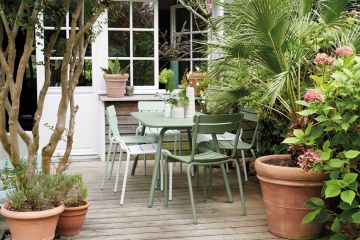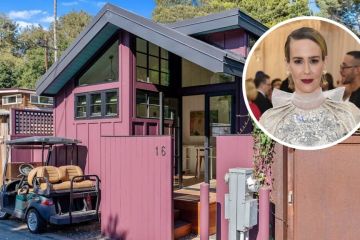Home-grown style: The elements of design that Australia is known for
Australia is recognised internationally as a leading design force – a remarkable feat given the country’s relatively small population and limited residential architectural history.
Our wildly varying climate and terrain has spawned numerous design styles that are coveted worldwide, from sophisticated beach houses to statement marble kitchens positioned at the centre of the home.
The high calibre of design produced by our local industry can be attributed to the great Australian dream, which underpins our heightened appreciation of the everyday spaces we occupy. Interior stylist Simone Haag describes this concept as a “prevailing feeling of pride and ownership”, and not just in the traditional sense of the word, given many rentals are now furnished with equal love and attention.
We asked designers what elements of Australian architecture, interiors, furniture and styling they consider to be our industry’s greatest strengths.
Architecture
One concept repeatedly singled out by industry insiders is the Australian penchant for designing exemplary indoor-outdoor spaces.
With backyards becoming smaller, particularly in major cities, these spaces make the most of the often limited outdoor space while embracing their surrounding environment and encouraging added natural light and ventilation.
Interior stylist at Thomas Archer Homes and Archer Interiors, Aimee Tarulli, describes these spaces as “trans-terior”.
- Related: An interior design glossary for dummies
- Related: Milan Design Week with Lucy Feagins
- Related: Inside the share house of three creatives
“Using outdoor spaces designed to create a larger ‘interior’ footprint of a home is at the forefront of clever design and something we do incredibly well,” she says.
Jessi Deakin and Sarah Yarrow, co-founders and stylists of Sydney-based interior styling company Black Arrow, say: “A backyard is a massive part of the Australian dream and so it’s no surprise that merging the indoors with the outdoors is such a signature strength of Australian architecture and design.”
Interiors
Australian homes are distinct in that they commonly feature an open-plan area acting as the main hub of the home.
“The quintessential Australian home celebrates open-plan living,” Tarulli says. “We lead busy lifestyles so it’s important that our homes complement our busy family life and attempt to make everyday living easy and relaxed.
“Large kitchens with room for kids to do homework on the island bench, and a butler’s pantry to hide last night’s dinner party, are often necessities.”
The widespread adoption of open-plan floor plans in Australia is largely the product of mid-century designers such as Robin Boyd, Alistair Knox and Harry Seidler, whose homes essentially changed the way Australians live.
Mid-century architecture principles are similar to those of Scandinavian design – another style that has experienced a renaissance of sorts in recent years. Both styles prioritise craftsmanship and earthy materials, which is typically complemented in Scandi homes by a lighter and brighter overall colour scheme.
“White is often the palette of choice to enhance natural light and create a bright, happy mood and aesthetic. Our relaxed nature sees us incorporating soft oak timbers, and raw natural finishes, like concrete and stone,” Tarulli says.
Furniture and styling
The curiosity and keen interest from Australians around home design translates to our furniture-and-decor styling.
These elements are typically reflective of the individual, showcasing a sentimental and personal side to a home’s interior.
“A penchant for authenticity, understated detailing, a sense of folly and global appeal delight the more literate design consumer,” Haag says. “Australians love a story and this translates to their prized pieces, where they can tell that story.”
Tarulli says: “These layers give our homes an individual and investing look, while celebrating our love of home and family.”
Bespoke pieces and luxe materials such as marble commonly feature throughout our homes, from high-end products right through to the first-home-owner market.
One key furniture item that’s considered an Australian home staple is a large oak dining or coffee table.
“Australians love natural timber, so [this] is often a permanent fixture in most Aussie homes. The beauty of natural timber gives a warm and welcoming ambience to a room and allows the look to be styled to suit a range of tastes,” Tarulli says.
Our appreciation of the outdoors and time spent in trans-terior spaces also heavily influence the furniture sector. Brands are increasingly investing in the creation of outdoor- furniture ranges matching the sophistication and quality of their interior equivalents.
“The relaxed mood of these spaces has also seen a big resurgence in locally made, designer, outdoor furniture ranges to suit entertainers or multi-use spaces, rather than simply functional outdoor furniture needs,” Tarulli says. “Beautiful outdoor sofas create an environment to enjoy and embrace our relaxed, Australian way of living.”
In the Australian market, Deakin says a well-designed outdoor area can count as much as an additional living or interior entertaining space.
“We’re seeing more furnishings that look as though they belong in your living room on your back deck.”
Decorating ideas galore and unique Australian approaches to creating the ideal home here
We recommend
States
Capital Cities
Capital Cities - Rentals
Popular Areas
Allhomes
More







